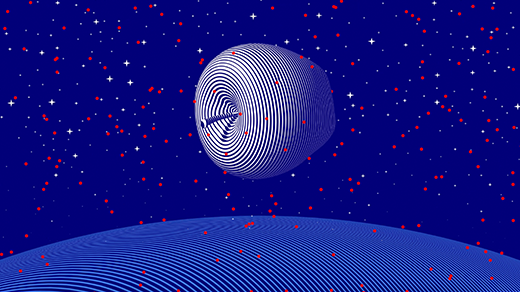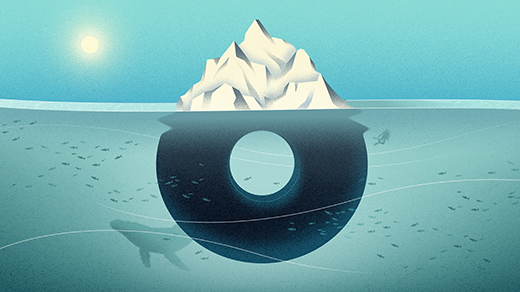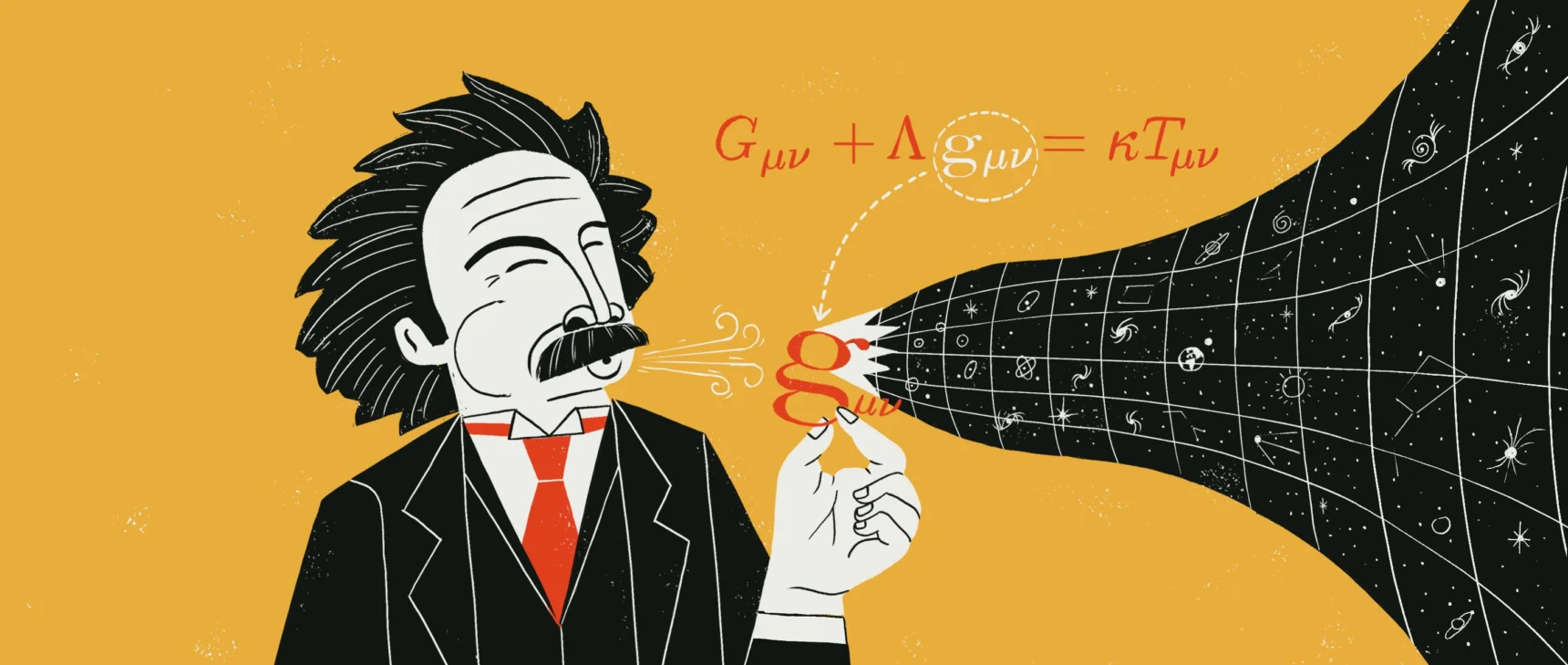The Webb Telescope Further Deepens the Biggest Controversy in Cosmology
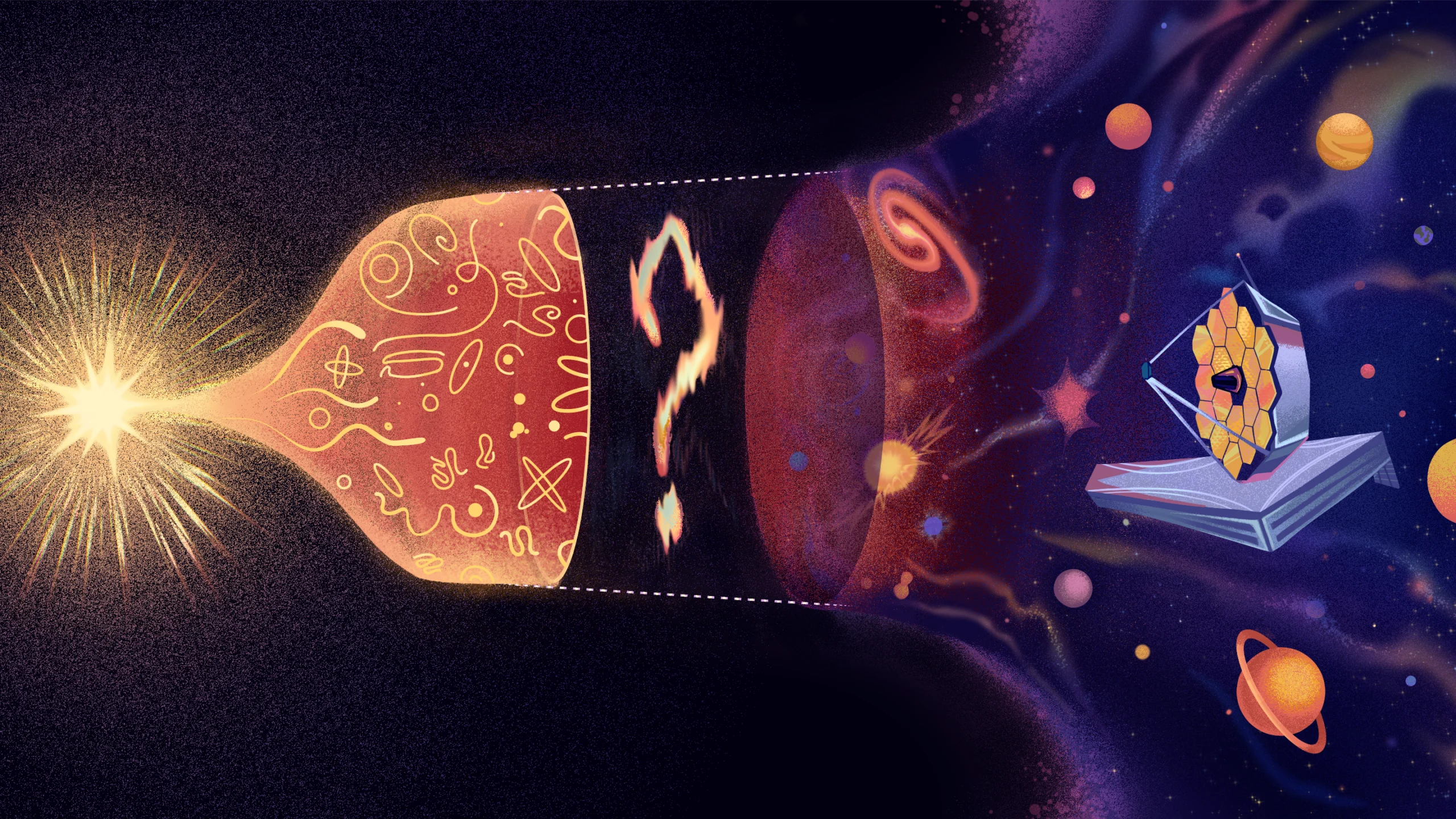
Three new measurements using the James Webb Space Telescope have led some to question if the Hubble tension is real.
Nico Roper/Quanta Magazine
Introduction
Nearly a century ago, Edwin Hubble discovered that the universe is getting larger. Modern measurements of how fast it is expanding disagree, however, suggesting that our understanding of the laws of physics might be off. Everyone expected the sharp vision of the James Webb Space Telescope to bring the answer into focus. But a long-awaited analysis of the telescope’s observations released late Monday evening once again gleans conflicting expansion rates from different types of data, while homing in on possible sources of error at the heart of the conflict.
Two rival teams have led the effort to measure the cosmic expansion rate, which is known as the Hubble constant, or H0. One of these teams, led by Adam Riess of Johns Hopkins University, has consistently measured H0 to be about 8% higher than the theoretical prediction for how fast space should be expanding, based on the cosmos’s known ingredients and governing equations. This discrepancy, known as the Hubble tension, suggests that the theoretical model of the cosmos might be missing something — some extra ingredient or effect that speeds up cosmic expansion. Such an ingredient could be a clue to a more complete understanding of the universe.
Riess and his team released their latest measurement of H0 based on Webb data this spring, getting a value that agrees with their earlier estimates.
But for years a rival team led by Wendy Freedman of the University of Chicago has urged caution, arguing that cleaner measurements were needed. Her team’s own measurements of H0 have invariably landed closer than Riess’ to the theoretical prediction, implying that the Hubble tension may not be real.
Since the Webb telescope started taking data in 2022, the astrophysics community has awaited Freedman’s multipronged analysis using the telescope’s observations of three types of stars. Now, the results are in: Two types of stars yield H0 estimates that align with the theoretical prediction, while the third — the same type of star Riess uses — matches his team’s higher H0 value.
Mark Belan for Quanta Magazine
Mark Belan for Quanta Magazine
That the three methods disagree “is not telling us about fundamental physics,” Freedman said. “That’s telling us there’s some systematic [error] in one or more of the distance methods.”
Freedman’s results have been submitted to The Astrophysical Journal but have not yet undergone formal peer review, where outside researchers anonymously check the data and analysis. Saul Perlmutter, a Nobel Prize-winning cosmologist at the University of California, Berkeley, who was shown the team’s preprint prior to its release, told Quanta that the results suggest “we may have a Hubble tension just within the [star-based] measurements. That’s the tension that we really have to be trying to figure out more than trying to invent new [cosmological] models.”
Riess, after studying the preprint, told Quanta that he takes issue with the small set of supernovas that Freedman’s team used in one step of the analysis, which he says could bias the results. “The new measurements are lovely and in fact are in excellent agreement with the same measurements obtained … several years ago by our group, so the distance measurements seem under control,” he said. “However, I fear this study of such a small supernova sample gives a somewhat misleading impression of the value of the Hubble constant.”
The results come after months of behind-the-scenes drama, as Freedman initially thought her analysis had killed the Hubble tension, only to see it come roaring back to life. “It’s been really … not dull, I’ll put it that way,” she said.
That’s business as usual. According to Perlmutter, “The Hubble constant has such a long and glorious tradition of being an impossible decades-long problem.”
A Clashing Universe
The hard part of gauging cosmic expansion is measuring distances to objects in space. The American astronomer Henrietta Leavitt first uncovered a way to do this in 1912 using pulsating stars called Cepheids. These stars flicker at a rate that relates to (and can therefore reveal) their intrinsic luminosity. Once you know how luminous a Cepheid is, you can compare that to how bright or dim it appears to estimate how far away its galaxy is.
Edwin Hubble used Leavitt’s method to measure the distances to a handful of galaxies with Cepheids in them, discovering in 1929 that galaxies farther from us are moving away faster. That means the universe is expanding. Hubble pegged the expansion rate at 500 kilometers per second per megaparsec (km/s/Mpc), meaning that two galaxies separated by 1 Mpc, or about 3.2 million light-years, fly apart at 500 km/s.
That was wildly off.
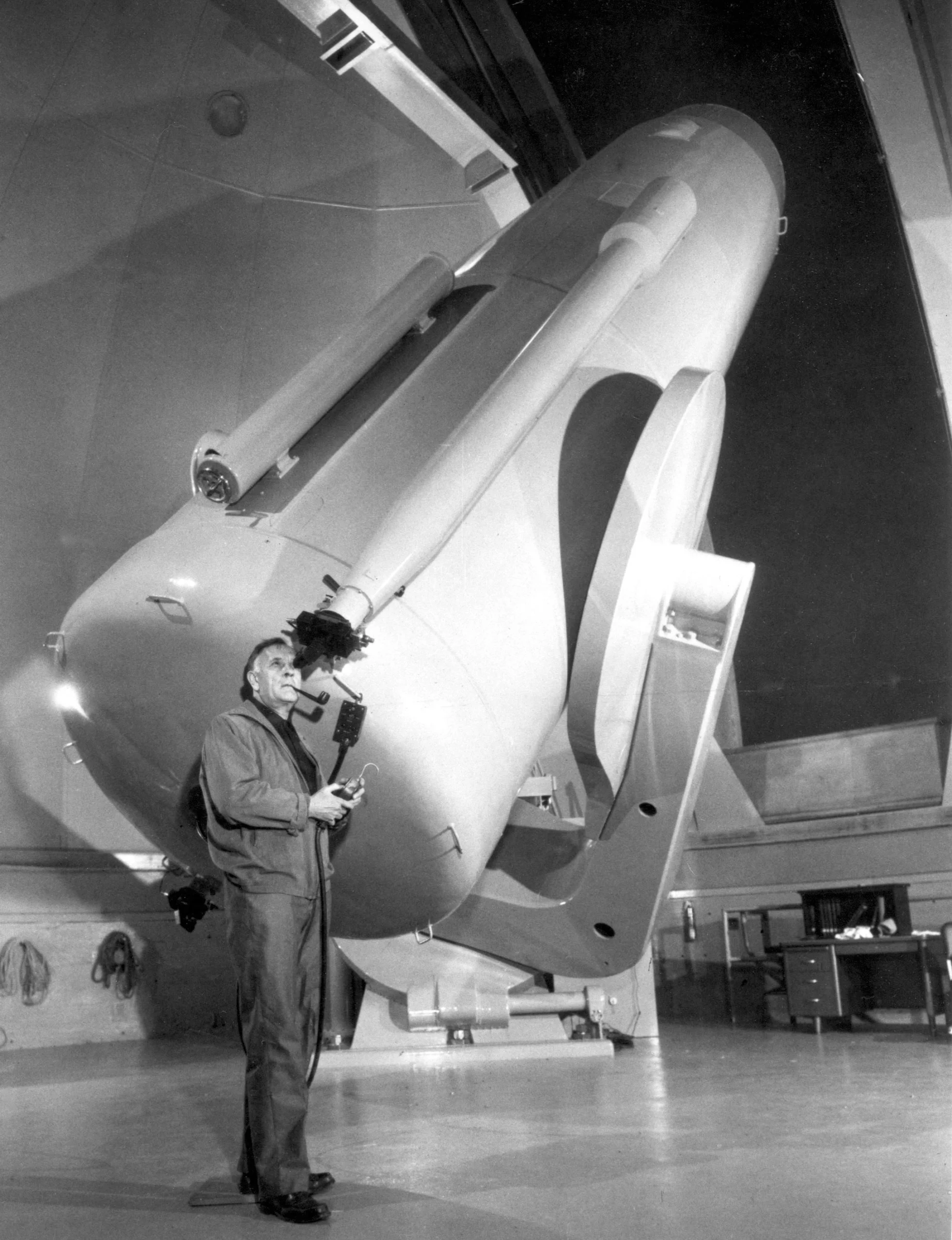
The American astronomer Edwin Hubble, discoverer of cosmic expansion, is pictured in 1949 peering into the Schmidt telescope at the Palomar Observatory near San Diego.
Courtesy of the Caltech Archives and Special Collections
Measurements of H0 improved as astronomers got better at calibrating the relationship between Cepheids’ pulsation frequency and their luminosity. Still, the whole approach was limited because Cepheids are only so bright. To measure the distance to galaxies across the vastness of the universe, scientists would need a new approach.
In the 1970s, researchers started using Cepheids to calibrate the distances to bright supernovas, enabling more accurate measurements of H0. Then as now, two research teams led the way, using supernovas anchored to Cepheids and arriving at disagreeing values of 50 km/s/Mpc and 100 km/s/Mpc. “There was no meeting of minds ever; they were just completely polarized,” said George Efstathiou, an astrophysicist at the University of Cambridge.
The 1990 launch of the Hubble Space Telescope gave astronomers a new, crisp view of the universe. Freedman led a multiyear observing campaign using Hubble, and in 2001, she and her colleagues announced an expansion rate of 72 km/s/Mpc, estimating that this was at most 10% off.
Riess, who is one of the Nobel Prize-winning discoverers of dark energy, jumped into the cosmic expansion game a few years later. In 2011, his team published an H0 value of 73 with an estimated 3% uncertainty.
Soon after this, cosmologists pioneered another method entirely. In 2013, they used the Planck telescope’s observations of light left over from the early universe to determine the detailed shape and composition of the primordial cosmos. They then plugged those ingredients into Einstein’s general theory of relativity and evolved the theoretical model forward nearly 14 billion years to predict the current state of the universe. This extrapolation predicts that the cosmos should currently be expanding at a rate of 67.4 km/s/Mpc, with an uncertainty that’s less than 1%.
Riess’ team’s measurement, even as its precision improved, stayed at 73. This higher value implies that galaxies today are flying apart faster than they should be according to theory. The Hubble tension was born. “If it’s a real feature of the universe, then it’s telling us that we’re missing something in the cosmological model,” Riess said.
This missing something would be the first new ingredient of the cosmos to be discovered since dark energy. Theorists have speculated about its identity: Perhaps it is an additional form of repulsive energy that lasted for a brief time in the early universe? Or maybe it’s primordial magnetic fields generated during the Big Bang?
Or maybe the something that’s missing has more to do with us than the universe.
Ways of Seeing
Some cosmologists, including Freedman, have suspected that unrecognized errors are to blame for the discrepancy.
The most common argument in this vein is that Cepheid stars live in the disks of younger galaxies, in regions crowded with stars, dust and gas. “Even with the exquisite resolution of [Hubble], you don’t see a single Cepheid,” Efstathiou said, “you see it superimposed with other stars.” This congestion complicates brightness measurements.
When the house-size Webb telescope launched in December 2021, Riess and his colleagues turned to its powerful infrared camera to pierce the dust in the crowded regions where Cepheids live. They sought to test if crowding has as strong an effect as Freedman and other researchers have claimed.
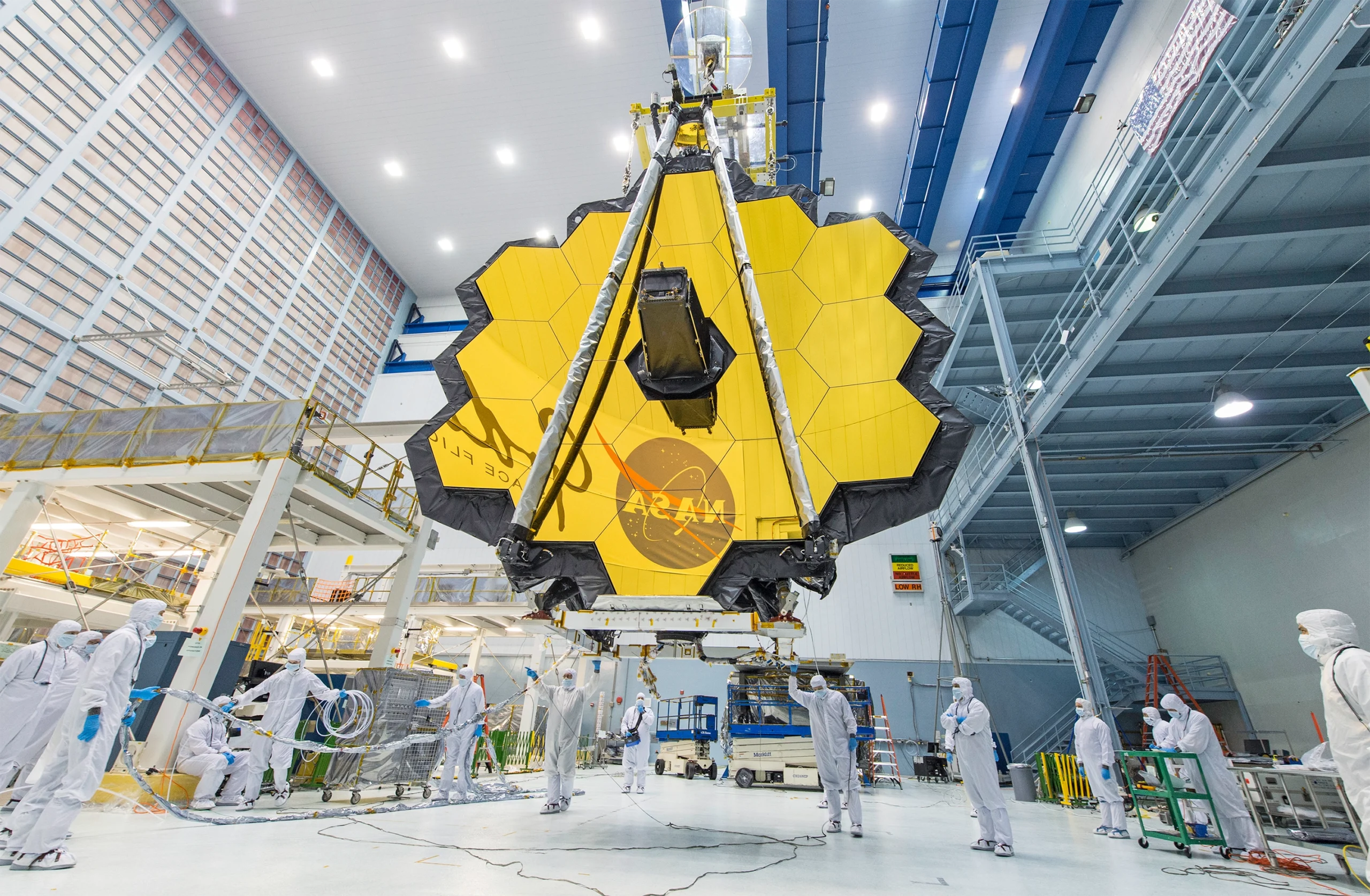
The 6.5-meter segmented mirror of the James Webb Space Telescope underwent tests at NASA’s Goddard Space Flight Center in Greenbelt, Maryland, in 2017, years before its December 2021 launch.
Desiree Stover/NASA
When they compared their new numbers to the distances calculated from Hubble telescope data, “we saw phenomenal agreement,” said Gagandeep Anand, a member of the team based at the Space Telescope Science Institute. “That tells us, basically, that the work that has been done with Hubble is still good.”
Their latest results with Webb reaffirm the H0 value that they measured with Hubble a few years ago: 73.0, give or take 1.0 km/s/Mpc.
Given the crowding concern, though, Freedman had already turned to alternative stars that could serve as distance indicators. These are found in the outskirts of galaxies, far from the madding crowd.
One type is “tip-of-the-red-giant-branch,” or TRGB, stars. A red giant is an elderly star with a puffed-up atmosphere that glows brightly in red light. As it ages, a red giant will eventually ignite the helium in its core. At that moment, both the star’s temperature and its brightness suddenly drop off, said Kristen McQuinn, an astronomer at the Space Telescope Science Institute who led a Webb telescope project to calibrate distance measurements with TRGBs.
A typical galaxy has many red giants. If you plot the brightness of these stars against their temperatures, you’ll see the point at which their brightness drops off. The population of stars right before the drop is a good distance indicator, because in every galaxy, that population will have a similar spread of luminosities. By comparing the observed brightness of these stellar populations, astronomers can estimate relative distances.
(With any method, the physicists must deduce the absolute distance of at least one “anchor” galaxy in order to calibrate the whole scale. For their anchor, Riess, Freedman and other groups use an unusual nearby galaxy whose absolute distance has been determined geometrically through a parallax-like effect.)
Using TRGBs as distance indicators is more complex than using Cepheids, however. McQuinn and her colleagues used nine of the Webb telescope’s wavelength filters to understand precisely how their brightness depends on their color.
Astronomers are also beginning to turn to a new distance indicator: carbon-rich giant stars that belong to what’s called the J-region asymptotic giant branch (JAGB). These stars also sit away from a galaxy’s bright disk and emit a lot of infrared light. The technology to observe them at great distances wasn’t adequate until the Webb era, said Freedman’s graduate student Abigail Lee.
Freedman and her team applied for Webb telescope time to observe TRGBs and JAGBs along with the more established distance indicators, the Cepheids, in 11 galaxies. “I am a strong proponent of different methods,” she said.
An Evaporating Solution
On March 13, 2024, Freedman, Lee and the rest of their team sat around a table in Chicago to reveal what they had been hiding from themselves. Over the previous months, they had split into three groups. Each was tasked with measuring the distance to the 11 galaxies in their study using one of three methods: Cepheids, TRGBs or JAGBs. The galaxies also hosted the relevant kinds of supernovas, so their distances could calibrate the distances of supernovas in many more galaxies farther away. How fast these farther galaxies are receding from us (which is easily read off from their color) divided by their distances gives H0.
The three groups had calculated their distance measurements with a unique random offset added to the data. When they met in person, they removed each of the offsets and compared the results.
All three methods gave similar distances, within 3% uncertainty. It was “sort of jaw-dropping,” Freedman said. The team calculated three H0 values, one for each distance indicator. All came within range of the theoretical prediction of 67.4.
At that moment, they appeared to have erased the Hubble tension. But when they dug into the analysis to write up the results, they found problems.
The JAGB analysis was fine, but the other two were off. The team noticed that there were large error bars on the TRGB measurement. They tried to shrink them by including more TGRBs. But when they did so, they found that the distance to the galaxies was smaller than they first thought. The change yielded a larger H0 value.
In the Cepheid analysis, Freedman’s team uncovered an error: In about half the Cepheids, the correction for crowding had been applied twice. Fixing that significantly increased the resulting H0 value. It “brought us more into agreement with Adam [Riess], which ought to make him a little happier,” Freedman said. The Hubble tension was resurrected.
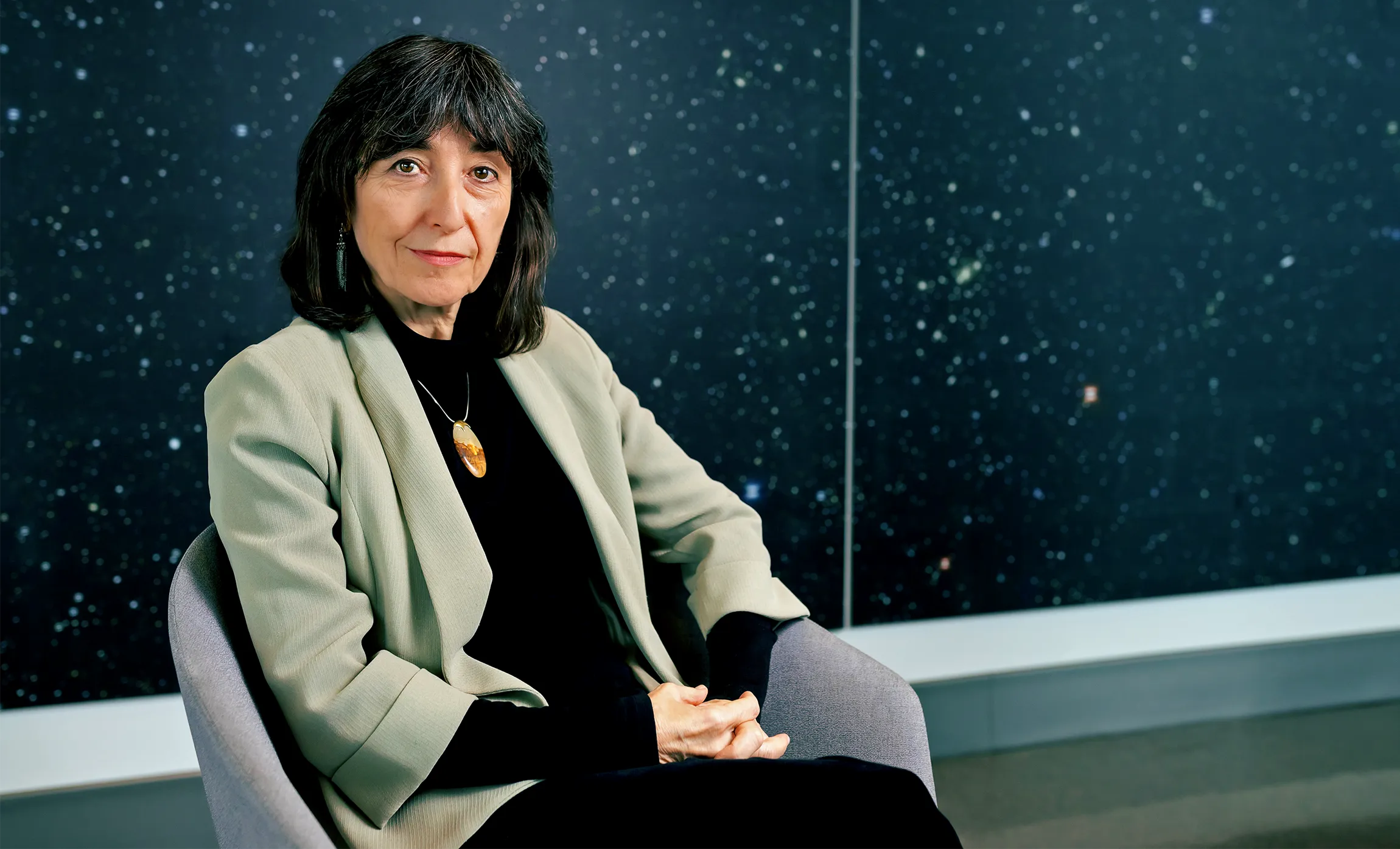
Wendy Freedman at the University of Chicago is exploring how Webb telescope observations can be squared with the standard cosmological model.
Nancy Wong
But Freedman suspects that the Cepheid-based H0 measurement is not as trustworthy as the others. It is extremely sensitive to assumptions about, for example, the elemental composition of the Cepheids, and each star’s neighborhood. Dust in the galactic disks where Cepheids live can absorb their light and dim them. The Webb’s infrared vision pierces the dust, but astronomers need to know how much dust is absorbing light so they can correct for it. For this, Freedman and her colleagues turned to archival Hubble telescope data, which captures the “dust depth,” but it’s not as high-resolution as Webb data. That added uncertainties in the calculated distances, she said.
Another issue surfaced. The 11 galaxies they studied with the Webb telescope are the ones nearest to Earth that host all four relevant objects (JAGBs, TRGBs, Cepheids and the relevant type of supernova). But according to Freedman, the galaxies’ supernovas seemed to be intrinsically brighter than the ones in farther galaxies. Riess and his colleagues also are concerned that this sample may be misleading and biased. In any case, it is another puzzle cosmologists have yet to understand, and it also affects the H0 value. “I think this is going to be where we’re really going to all have to focus our attention on in the next few years,” Freedman said.
Their paper reports three separate H0 values. The JAGB measurement — the one that was done in a completely blind way, without any subsequent correcting — gives 67.96 km/s/Mpc, give or take 1.71 km/s/Mpc. That’s smack-dab on top of the theoretical prediction, seeming to confirm the standard model of cosmology.
TRGBs yield a value of 69.85 with similar error margins. The result also alleviates the Hubble tension.
The Cepheid method put the value of H0 higher, at 72.05, but with more subjectivity involved: Different assumptions about the stars’ characteristics caused the value to range from 69 to 73. The high end of the range matches Riess’ measurements; at the low end, the Hubble tension all but goes away.
“I don’t think we can just say that the Hubble constant is 73,” Freedman said. “I think this is the first test of the Cepheid distance scale,” meaning that JAGBs and TRGBs are serving as a check on the more established method. “And we’re not getting the same answer when we test the Cepheids. So I think it’s important.”
Combining the methods and uncertainties yielded an average H0 value of 69.96 with a 4% uncertainty. That margin of error overlaps with both the theoretical prediction for the cosmic expansion rate and Riess’ team’s higher value.
“We don’t yet, I think, have the evidence to unambiguously conclude that there’s a [Hubble] tension,” Freedman said. “I just don’t see it.”
“Everything depends on tracking down all of these systematic errors,” Perlmutter said.
Tensions and Resolutions
The James Webb Space Telescope is also enabling additional ways to measure H0. For instance, astronomers are in the early phases of using how mottled a galaxy looks as a proxy for its distance. The idea is simple: Closer galaxies look clumpier because you can resolve some of their stars, whereas more distant galaxies appear smoother. “It’s basically a way to turn the crowding into a measure of distance,” said Anand, who is involved with this project in addition to his work with Riess.
A different method also offers some hope: A massive cluster of galaxies acts like a warped magnifying glass, bending and magnifying the image of an object behind it and creating multiple images of the same object as its light takes multiple paths. The University of Arizona astronomer Brenda Frye leads a program to observe seven clusters with the Webb telescope. When Frye and her colleagues looked at their first telescope image last year, featuring the massive galaxy cluster G165, “we all just said, ‘What are those three dots that weren’t there before?’” she recalled. The dots were three separate images of the same supernova that had exploded behind the cluster.
After repeatedly observing the image, they could calculate the differences between the arrival times of the three lensed supernova images. The time delay is proportional to, and can be used to infer, the Hubble constant. “[It] is a one-step measurement for H0,” Frye said, “which makes it completely independent.” They measured an expansion rate of 75.4 km/s/Mpc, although with a large uncertainty of +8.1 or −5.5 km/s/Mpc. Frye expects to refine those error bars after a few more years of similar measurements.
Both Riess’ and Freedman’s teams also anticipate that the next few years of JWST observations will enable them to home in on an answer with their traditional, star-based methods.
“With the improvement in the data, this is ultimately going to be solved, and I think pretty quickly,” Freedman said. “We’re going to get to the bottom of this.”
Editor’s Note: The article was updated after publication to include comments from Adam Riess.

